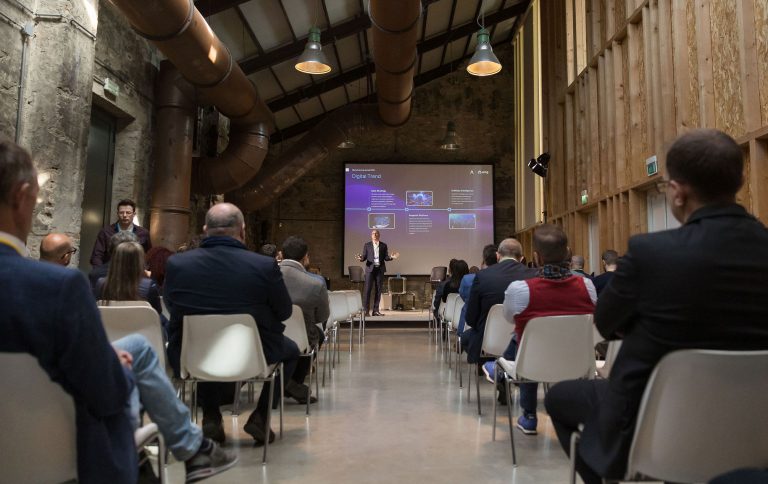System Integration and Block Architecture. How the next generation of API integration works
System Integration in a company is essential when launching new business models. It helps to increase operational efficiency and strengthen relationships with customers. This is a key step in the digital transformation process aimed at enhancing the technological investments of companies and offering integrated and connected experiences, products, and services.
When to start a System Integration Process
All companies today grapple with decisions to make changes in their processes, regardless of the industry, and adopting digital technologies is at the forefront to overcome market challenges.
One of the main factors that often cause the failure of digital transformation projects concerns the integration of systems. If, for example, the data and processes in the company are fragmented due to the use of heterogeneous and disconnected software, the company is unable to make informed decisions because it struggles to fully understand the relationship with its customers, employees and partners.
The IT systems in a company are tools dedicated to different areas of a company like Human Resources, a CRM system that aims to optimize the work and collaboration of sales, marketing, and service departments, and lastly ERP systems that involve back-office financial processes, supply chains, operations, reports, and production.
Traditional approaches to software integration involve point-to-point integration flows that can be extremely customized single connections and therefore difficult to replicate and maintain. The result is often a fragile architecture, understandable to a few, and not suitable for changing and modifying its components.
It is clear that a new approach to the integration of IT systems is necessary to guide the digital transformation process in a company that follows the Composable Enterprise model.
Composable Enterprise, the winning model for Business
The concept of Composable Enterprise refers to highly connected business processes that are managed through cloud platforms and API architectures, provided by external collaborators, or made available through internal data centers.
Successful organizations today must be able to quickly change a product or service if the market demands it. These companies must quickly adapt to competition, whether it comes from the other side of the world, from another industry or from around the corner. It is also essential to know how to use your skills to create new business models and plan the expansion of the company into other markets.
The Composable Enterprise model – Businesses that have adopted this type of model use open APIs, cloud, data analytics, mobile, social, and IoT connection. The modular enterprise eliminates the hierarchical and wired systems and processes that characterize the companies of the past and completely rethink the role and use of technology in an organization. In fact, the use of self-service and reusable services is promoted, as well as a standard method that is simple and immediate for unlocking data and connecting company software.
The new generation of System Integration: Mulesoft
The emerging Composable Enterprise model makes use of the integration of next-generation systems, overcoming the limits of traditional approaches:
- Complex connectivity with long project periods and high costs
- Inadequate control
- Insufficient security level
- Highly specialized and diversified skills.
Among the System Integrators that overcome these problems is MuleSoft. It stands out for its API approach and its modular blocks that allow you to speed up the project while maintaining safety and control.
Connectivity based on reusable API
Thanks to the hundreds of connectors present in MuleSoft’s Anypoint Platform ™, the connections between company software is immediate and with a drastic reduction of testing times and costs. The APIs are designed for simple use, are easy to manage, configure, and secure. The concept behind it is to compose reusable APIs and avoid IT departments having to develop connections from scratch.
The MuleSoft Mock functionality allows immediate use of the API, favoring development parallelism and effectively eliminating the dependency between the activities of different suppliers who have to wait for the creation of an interface before being able to start their work. It is no longer necessary to wait for the implementation of a phase to be able to move on to the next. The integration with MuleSoft brings value not only to the project itself but to the entire assets of the company today and tomorrow.
One product for all types of integration and full flow visibility
Integration projects developed with MuleSoft ensure that business applications interface with a single interlocutor, facilitating a rapid and sustainable replacement of one of the infrastructure components, if necessary. The APIs connect all the software that different departments in the company use every day, coordinating activities and ensuring the reduction of maintenance costs.
Security and integrity with a homogeneous System Integration
When resources are hampered by inefficient and disjointed processes, there is a stronger chance to have errors with tasks and incomplete information. If, on the other hand, the resources work within a single integrated system, the application infrastructure is homogeneous and all data is retrieved in a master repository according to standard rules. It is therefore easy to guarantee the integrity and reliability of the information. The data are available in real time and correct from a qualitative point of view.
Know how and resources involved
Thanks to MuleSoft as a System Integrator, companies no longer have to involve different stakeholders, including suppliers and internal resources. In fact, it is sufficient to interface with software based on a unique technology provided by MuleSoft (REST API). You no longer need to equip yourself with specific skills on different technologies or use external suppliers.
MuleSoft utilizes the full potential of the Salesforce 360° Customer Platform
Salesforce acquired Mulesoft in 2018. Their goal was to aggregate all customer information into a single 360°Customer Platform. In addition to integrating data from different Salesforce Clouds such as Service, Marketing, and Sales, they additionally took into account data residing outside the Salesforce ecosystem. MuleSoft was the answer to this need as it made it possible to connect all the company’s systems to create the best connected experience.
In 2020 MuleSoft was named a Leader for the fifth consecutive time in the Gartner Magic Quadrant for Full Life Cycle API Management.
Do you want to stay up to date on System Integration Process? Subscribe to our Newsletter.






